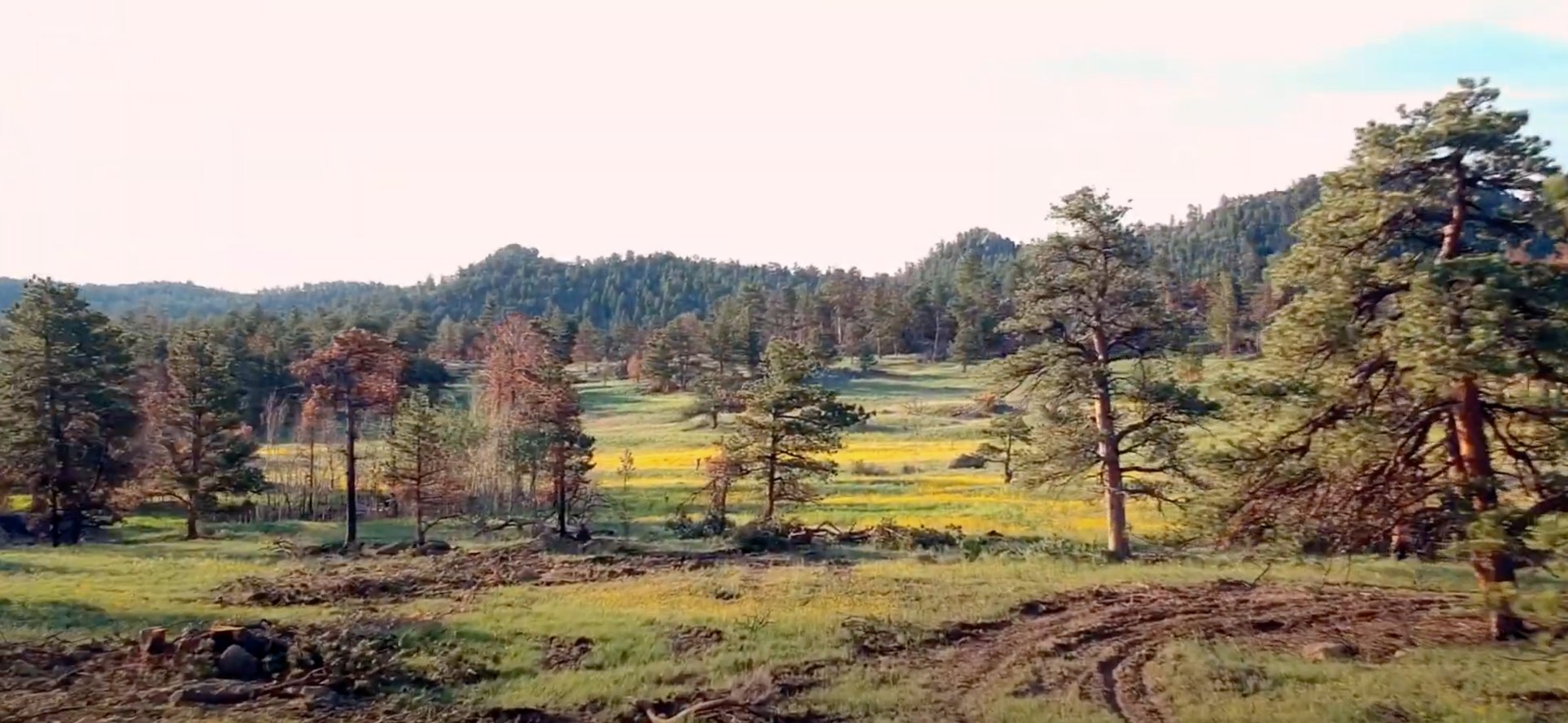
Healthy Forest Initiative
The Larimer Conservation District’s Healthy Forest Initiative began in 2016 after the 2012 High Park Fire to address upper watershed resource concerns including forest health, wildfire risk, water quality, and wildlife habitat.
The Larimer Conservation District strives to promote forest resilience into each one of our projects. Our foresters use clues from the landscape’s historic context and current forest conditions to inform our management decisions on the ground. Each forest plan is unique to the site, and is designed to not only meet today’s forest challenges, but adapt to a future with a drier climate and an increase in wildfire occurrence. In turn, these forests are better prepared to recover from pests, disease, and wildfire.
Forests play a major role in Coloradans’ value system, and by conserving our forests through active management, we can help protect our shared resources and values.
Historically, montane forests experienced frequent wildfire, every 2-25 years on average. This thinned out the undergrowth and killed overstory trees, maintaining an open forest structure that allowed for understory plant diversity to flourish
Openings in forests are a rare but critical habitat element.
Frequent fires reduces the risk of future catastrophic wildfires (buildup of excessive fuels)
In Colorado, colonizer influence on our forests has resulted in a loss of the processes and disturbances that our forests have co-evolved with.
In the early 1900s, a lack of science based grazing techniques led to overgrazing of understory plants. By cattle removing all of these fine fuels, sparks that would have historically caused a low-intensity, surface-fuel driven wildfire were not able to carry. This led to a decrease in frequency of characteristic wildfire.

What services does LCD’s Forestry Program provide?
Technical Assistance
Call us for a complementary visit to discuss your forest health concerns on your property.
Forest Management Plan Development
Forest inventory & stand analysis
Mapping
Plan writing
Fire & Fuel modeling and analysis
Funding
LCD has in-house grant-writing expertise. We often pair EQIP funding with additional grants to cover project costs.
Project Management
Boundary and individual tree marking
Contractor procurement and oversight
Site remediation, including noxious weed management, erosion control measures, etc.

Forest Health Projects
Drala Mountain Center
This two-phased total biomass removal project helped prevent the spread of one branch of the 2020 Cameron Peak Fire. LCD planned and implemented the mechanical treatment of 165 acres of Ponderosa Pine forest, which in turn saved 60 structures during the Cameron Peak Fire.
Pole Hill
Ongoing since 2017, this project has so far accomplished 375 acres of total biomass removal in a densely-populated wildland urban interface (WUI) community, just west of Loveland. With another 215 acres planned or in progress, LCD’s treatments are being completed at a landscape scale, especially when tied in with adjacent work completed by the USFS. This project’s goals are to reduce the risk of catastrophic wildfire to the community and the Colorado Big Thompson water delivery infrastructure, as well as improve forest health and wildlife habitat.
Funding: NRCS EQIP, CSFS FRWRM, Peaks to People, Northern Water
Red Feather Lakes
This project was designed to help protect the town of Red Feather Lakes. By treating 390 acres of ponderosa pine forest surrounding downtown RFL, this project’s goals were to reduce impact of wildfire to the community, as well as to protect wildlife habitat, water resources, and forest health. This project protects over 1,000 homes and business in downtown RFL.
Elkhorn Creek
This project has been ongoing since early 2017, and involves two large landowners in Red Feather Lakes, CO: Drala Mountain Center and Ben Delatour Scout Ranch. These total biomass removal projects helped prevent the spread of one branch of the 2020 Cameron Peak Fire. LCD planned and implemented the mechanical treatment of 305 acres of Ponderosa Pine forest, which in turn saved 60 structures during the Cameron Peak Fire.
Funding: NRCS Environmental Quality Incentives Program and CSFS Forest Restoration and Wildfire Risk Mitigation Grant

Accomplishments
Completed over 3,700 acres as of December 2024
An additional 1,357 acres had inventory and monitoring completed in 2024
We’ve worked on 74 different project sites since 2016
We’ve worked with 12 different local logging contractors to accomplish these acres






